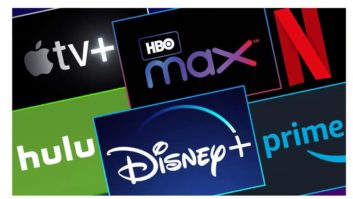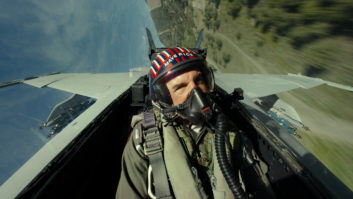More industry professionals are visiting CES each year to discover the latest consumer trends, with the intention of factoring the resulting information into strategic planning and investment. Participation at this year’s event (the 40th) topped 140,000 with more than 26,000 international attendees and 2700 exhibitors.
High profile keynotes were presented by Microsoft Chairman Bill Gates, Motorola Chairman Ed Zander, Walt Disney President Robert Iger and CBS President Leslie Moonves. Bill Gates, apart from inevitably promoting the newly launched Windows OS Vista, made a pitch for the home entertainment server and the delivery of content over IPTV. In fact IPTV proved to be a popular theme with more people having access to high speed internet and in some cases fibre to the home.
Ed Zander made a pitch for the mobile phone being the most ubiquitous device worldwide with two billion subscribers with the available services continuing to grow dramatically over the next decade. Both Disney and CBS illustrated their belief that content must be available to audiences wherever they are and on whatever device they are using, be it television, PC, organiser, games console, iPOD or mobile phone. Both had several examples of how they are implementing this philosophy.
Leslie Moonves explained that CBS makes much of its popular programming available on YouTube and claims “Over 75 million viewings, clearly with a very positive effect on our television programming.”
Walt Disney’s Robert Iger stated: “I am proud to say we were the first company to put movies and TV shows on iTunes, helping to accelerate a consumer revolution.”
These examples represent just the tip of the iceberg. As the internet becomes more capable it is creating new business models, diversifying and increasing time spent viewing content and becoming an essential part of traditional broadcasters’ output.
High definition was everywhere at CES but not promoted as heavily as previous years, an indication that HD is now taken for granted and well on the way to becoming the next generation of standard definition. In fact the plot has moved on, meaning that the most promoted phrase at CES was ‘Full HD’.
It seems that all the major display manufacturers have turned their attention to panels capable of displaying a full 1920×1080 pixels at 50/60P. The first sources to exploit these resolutions and frame rates are the new generation of high definition DVDs and console games. However, there is a clear message for broadcasters that interim HD formats may have a very short shelf life!
Beyond Full HD, manufacturers were also keen to promote displays with 100/120Hz framerates and LCD display sizes up to 108-inches. Beyond HD, Sharp also had what it claimed to be the ‘world’s largest’ 8.84-megapixel 64″ LCD digital cinema display with 4k x 2k resolution. Despite the growing dominance of LCD technology, surprisingly some companies were still heavily promoting plasma displays by claiming that manufacturing costs for the larger sizes remain competitive.
Drawing large crowds and a surprise to many was the appearance of flat panel displays based upon Organic LED (OLED) technology. Sony exhibited some of the largest (11″ and 27″) and thinnest (8 and 11mm) prototypes seen so far. The larger sample was also Full HD resolution.
On the acquisition front Panasonic introduced a line-up of 3-chip CCD high definition consumer camcorders with a range of storage option: optical, solid-state memory cards and tape. One Panasonic executive claimed that consumers now have access to image acquisition quality priced at approximately $1500 “competitive with entry level $5-7K pro cameras.”
Clearly there was much at CES for professionals to digest. Traditional broadcasting to televisions in the home is now just one of many delivery options that need to be embraced. Image quality has taken a tremendous leap forward making today’s standard definition about as interesting as black and white was after the introduction of colour! Still unresolved is the issue of home media storage and networking. Microsoft would like to own this space with its Home Server software, Media Centre and Xbox, but the jury is still out — at least until 2008!







